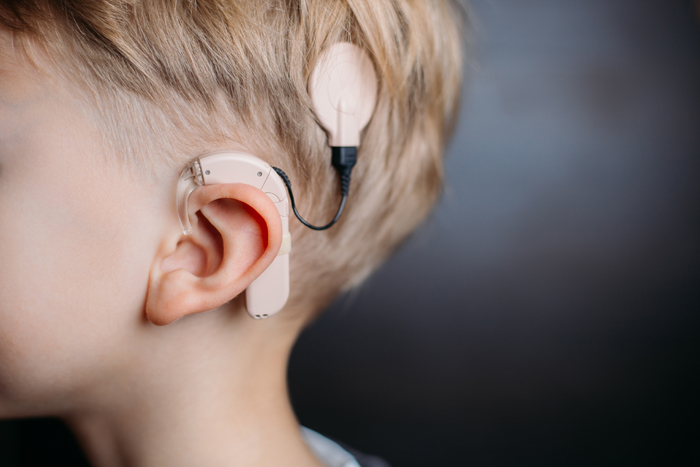Cochlear Implant Surgery in Tardeo, Mumbai
An ear is divided into three sections - the outer ear, the middle ear, and the inner ear. The inner ear comprises the bony labyrinth and the membranous labyrinth. The bony labyrinth has:
- Cochlea: The cochlea is a hollow bone, shaped like a snail, that is divided into two chambers by a membrane.
- Semicircular canals: The semicircular canals, also known as labyrinthine canals, are on top of the cochlea.
- Vestibule: The vestibule is in the center of the bony labyrinth. It communicates with the cochlea and the semicircular canal.
Why is the cochlear nerve important in our respiratory system?
The cochlear nerve, also recognized as the acoustic or auditory nerve, is the cranial nerve that controls hearing. It goes from the inner ear to the brainstem and out via the temporal bone on the side of the skull. Inflammation, infection, or injury can cause disturbance in the cochlear nerve. It is a strictly sensory nerve and has no motor or movement function. The cochlear nerve controls hearing, while the vestibular nerve controls balance, motion, and position.
What is the anatomical structure of the cochlear nerve?
Your ear comprises three major components:
- The pinna (the fleshy, visible part of your ear) and the ear canal are in the outer ear.
- The middle ear comprises three ear bones (known as ossicles), the eardrum (also known as the tympanic membrane), and the eustachian tube.
- The cochlea, cochlear nerve, and vestibular organ are all found in the inner ear.
How does your cochlear nerve system work?
The cochlear nerve is a sensory nerve that allows you to hear. This complex mechanism starts and ends with the following steps:
- Your ear’s pinna picks up sound waves and directs them via your ear canal to your eardrum. Waves trigger your eardrum to vibrate.
- The sound wave from your eardrum moves your ear bones (the malleus, incus, and stapes are three tiny bones in the middle ear).
- Cochlear nerve cells (within the spiral ganglion) form synaptic connections with hair cells because of this movement (also within the cochlea).
- It then converts the hair cells into electrochemical signals for sound vibrations.
- We then send the nerve signals back to the brainstem via the cochlear nerve.
- It carries signals from the brainstem to the auditory cortex in the brain, where they interpret and “notice”.
The function of the cochlear nerve starts when sound vibrations hit the eardrum, specifically the tympanic membrane. By hitting the eardrum, it can affect the cochlear nerve with many disorders and diseases. These illnesses can destroy the nerve endings in the auditory system, resulting in hearing loss. The cochlea is a fluid-filled, spiral-shaped organ in the inner ear. Treatment for this hearing loss involves the use of cochlear implants.
Cochlear implants are a very effective treatment because they often restore a significant portion of the lost hearing capability. The cochlear nerve trunk is 1 inch long and contains over 30,000 sensory nerve fibers.
What causes cochlear damage?
- Noise exposure that is too loud or too long
- Antibiotics with high potency
- The infection of meningitis affects the brain and the spinal cord
- Meniere's disease affects the inner ear
- Tumors of the ear canal
- Hearing loss can occur because of aging
What are the symptoms and conditions associated with cochlear nerve damage?
Inflammation can affect the structure and function of the cochlear nerve because of an autoimmune disease, trauma, congenital malformation, tumor, infection, or blood vessel injury.
The following symptoms may occur depending on the condition:
- Vertigo
- Nystagmus: rapid movement of your eyeballs that you cannot control
- Tinnitus: you may hear echo or whizzing
- Sensorineural deafness
- Nausea or vomiting
- Instability or a history of falls
- Headaches
What are serious conditions that may affect the cochlear nerve?
- Vestibular labyrinthitis is an inflammatory condition that affects the inner ear
- Multiple Sclerosis (MS)
- Acoustic Neuroma is a type of tumor that occurs in the ear
- Cerebellar Stroke at the Anterior Inferior Artery
- Traumatic conditions
- Congenital deformity
When do you meet an ENT doctor?
- Distorted hearing
- Difficulty in comprehending speech
- Hearing loss
- In the ear, there is a “drab” sensation.
- Hearing whistling sounds
Conclusion
The cochlear nerve, which is a sensory nerve, controls hearing. Waves cause your eardrum to vibrate by sending signals from the brainstem to the auditory cortex in the brain, where they interpret and “notice.”
A fluid that has a composition similar to that of cerebrospinal fluid.
Sensorineural deafness and vertigo are the most common results of damage to the auditory nerve.
It depends on the individual cases. Consult an ENT specialist.
Symptoms
Our Doctors
DR. RINAL MODI
BDS...
| Experience | : | 8 Yeras Experience |
|---|---|---|
| Speciality | : | Dental and Maxillofa... | Location | : | Tardeo |
| Timings | : | Mon - Sat : 10:00 AM... |
DR. DIPAK DESAI
MBBS, MS, DORL...
| Experience | : | 21 Yeras Experience |
|---|---|---|
| Speciality | : | ENT, Head and Neck S... | Location | : | Tardeo |
| Timings | : | Available by prior a... |
DR. KEYUR SHETH
DNB (Med), DNB (Gast...
| Experience | : | 7 Yeras Experience |
|---|---|---|
| Speciality | : | General Surgery & Ga... | Location | : | Chembur |
| Timings | : | Mon to Fri : 2:00 PM... |
DR. MEENA GAIKWAD
MBBS, MS (ENT)...
| Experience | : | 8 Yeras Experience |
|---|---|---|
| Speciality | : | ENT, Head and Neck S... | Location | : | Chembur |
| Timings | : | Mon - Sat : 6:30 PM ... |
DR. SHASHIKANT MHASHAL
MBBS, MS (ENT)...
| Experience | : | 22 Yeras Experience |
|---|---|---|
| Speciality | : | ENT, Head and Neck S... | Location | : | Chembur |
| Timings | : | Friday : 8:00 PM to ... |
DR. GANGA KUDVA
MBBS, MS (ENT) , DNB...
| Experience | : | 12 Yeras Experience |
|---|---|---|
| Speciality | : | ENT, Head and Neck S... | Location | : | Tardeo |
| Timings | : | Available by prior a... |
DR. JAYESH RANAWAT
MBBS, MS, DNB, FCPS...
| Experience | : | 16 Yeras Experience |
|---|---|---|
| Speciality | : | ENT, Head and Neck S... | Location | : | Tardeo |
| Timings | : | Available by prior a... |
DR. MITUL BHATT
MBBS, MS (ENT), DNB ...
| Experience | : | 12 Yeras Experience |
|---|---|---|
| Speciality | : | ENT, Head and Neck S... | Location | : | Tardeo |
| Timings | : | Mon - Sat : 2:30 PM ... |
DR. NINAD SHARAD MULEY
BDS, MDS...
| Experience | : | 9 Yeras Experience |
|---|---|---|
| Speciality | : | Dental and Maxillofa... | Location | : | Chembur |
| Timings | : | Mon - Sat : 9:00 AM ... |
DR. ANKIT JAIN
MBBS, MS (ENT)...
| Experience | : | 14 Yeras Experience |
|---|---|---|
| Speciality | : | ENT, Head and Neck S... | Location | : | Tardeo |
| Timings | : | Mon, Wed, Fri : 4:00... |
DR. PRASHANT KEWLE
MS (ENT), DORL...
| Experience | : | 17 Yeras Experience |
|---|---|---|
| Speciality | : | ENT, Head and Neck S... | Location | : | Chembur |
| Timings | : | Mon - Sat : 4:00 PM ... |
DR. SHRUTI SHARMA
MBBS,MS(ENT)...
| Experience | : | 15 Yeras Experience |
|---|---|---|
| Speciality | : | ENT, Head and Neck S... | Location | : | Tardeo |
| Timings | : | "Mon - Fri : 11:00 A... |
DR. ROSHNI NAMBIAR
MBBS, DNB (ENT)...
| Experience | : | 19 Yeras Experience |
|---|---|---|
| Speciality | : | ENT, Head and Neck S... | Location | : | Chembur |
| Timings | : | Mon - Sat : 12:30 PM... |
DR. YASH DEVCKAR
MBBS, MS (ENT)...
| Experience | : | 11 Yeras Experience |
|---|---|---|
| Speciality | : | ENT, Head and Neck S... | Location | : | Chembur |
| Timings | : | Mon - Sat : 9:30 AM ... |
Our Top Specialities
NOTICE BOARD
CONTACT US
CONTACT US
 Book Appointment
Book Appointment











.jpg)





.svg)
.svg)
.svg)
.svg)








